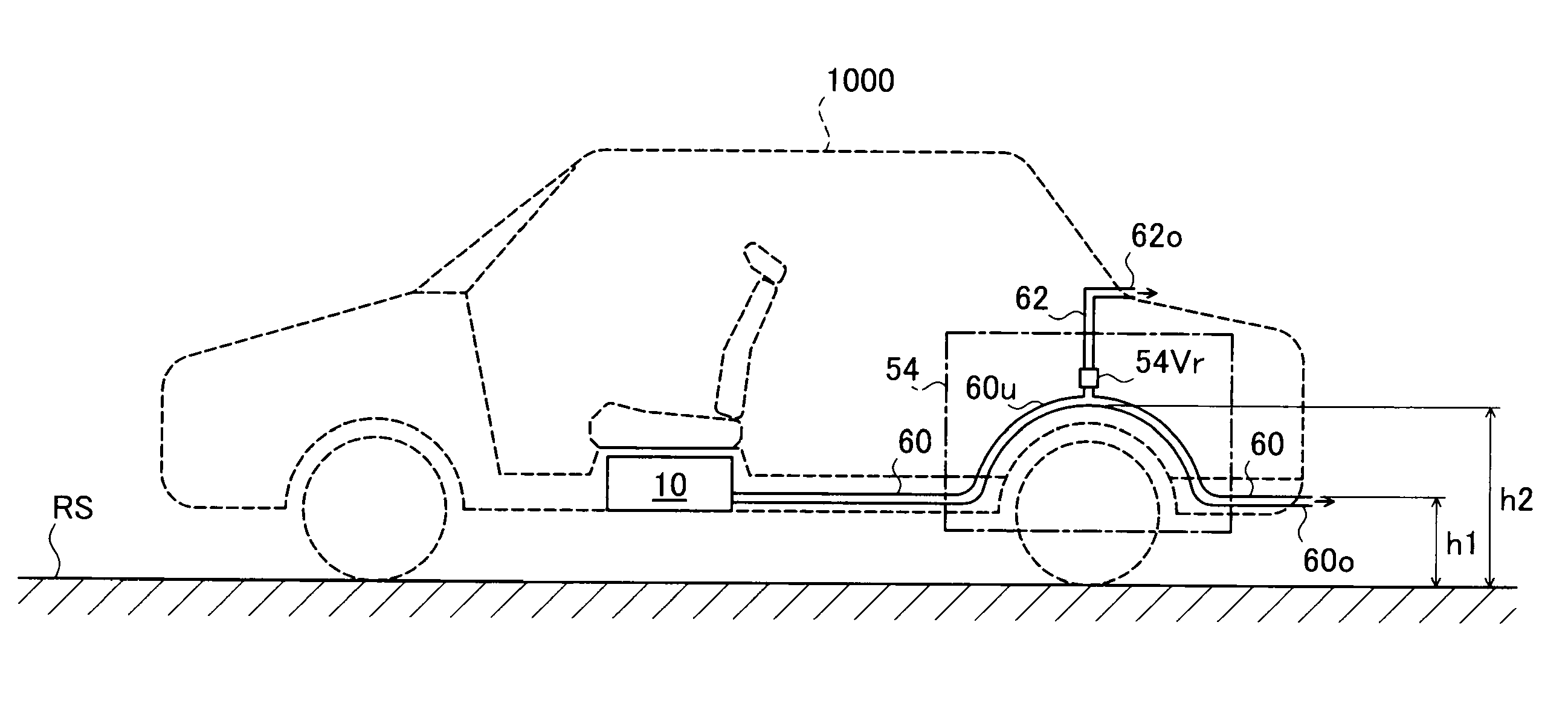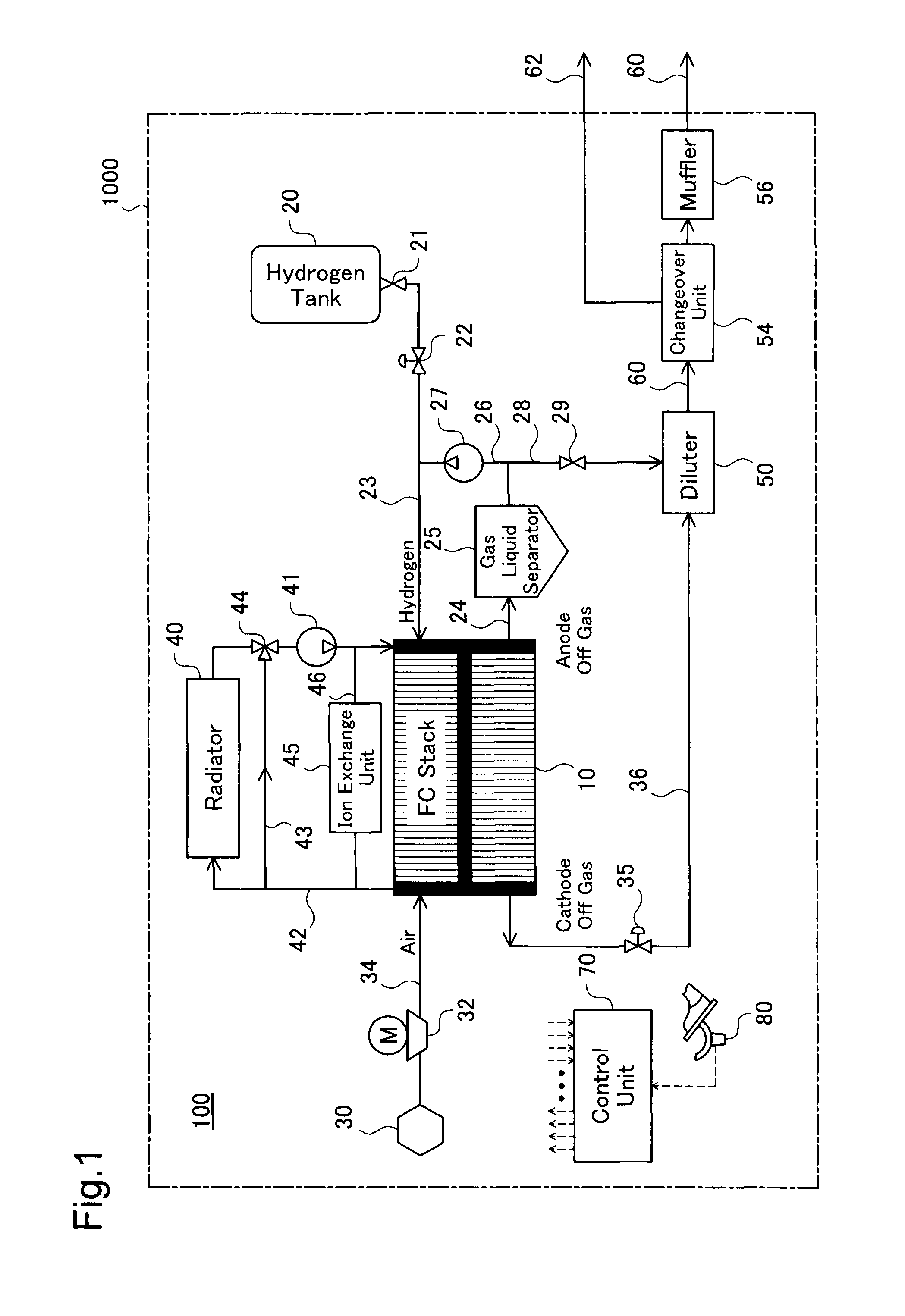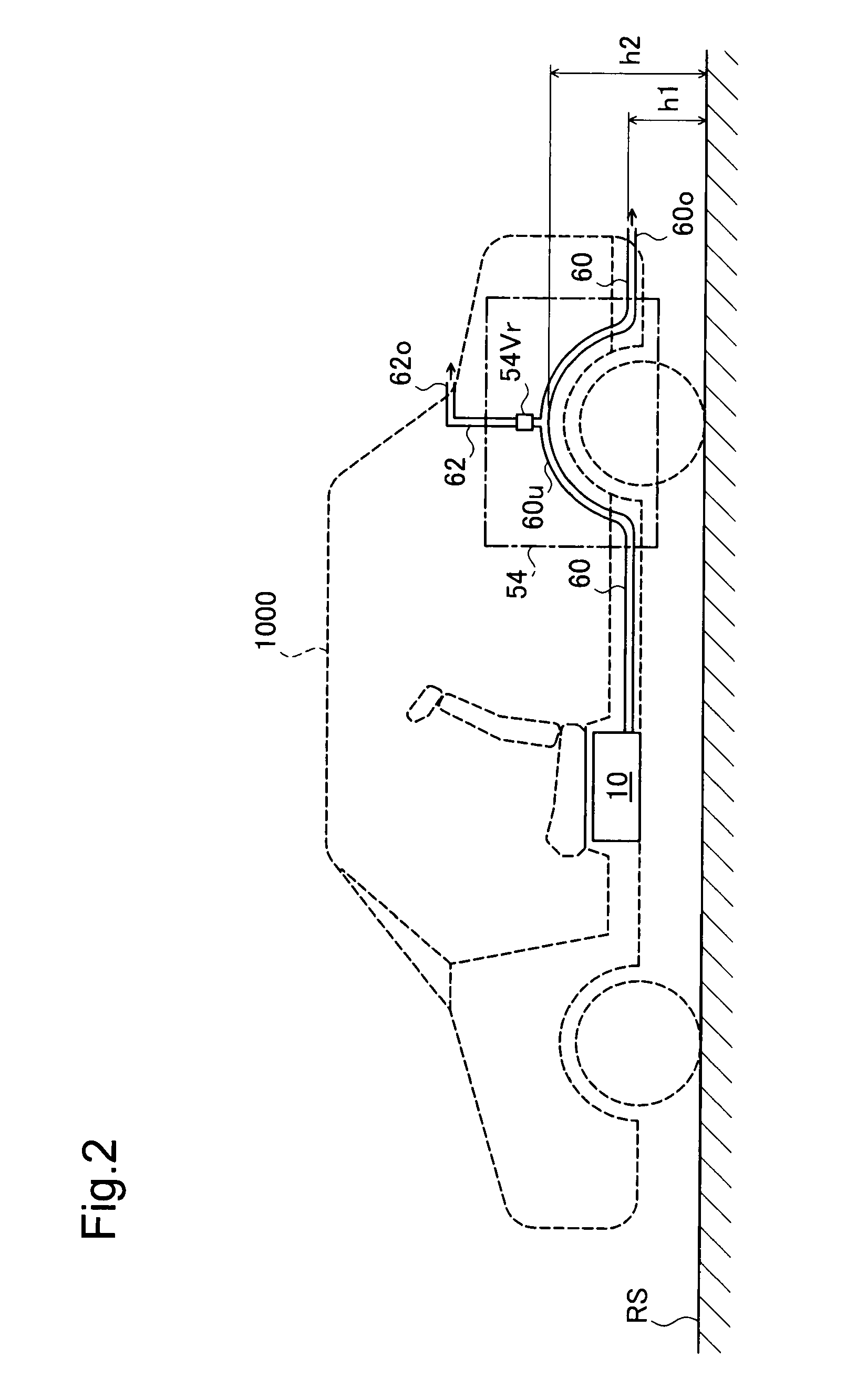Moving body equipped with fuel cells
a technology of moving body and fuel cell, which is applied in the field of moving body equipped with fuel cells, can solve the problems of fuel cell malfunction, blockage of the outlet, further run, etc., and achieve the effect of accurate detection of the level, effective use and reduced vehicle center of gravity
- Summary
- Abstract
- Description
- Claims
- Application Information
AI Technical Summary
Benefits of technology
Problems solved by technology
Method used
Image
Examples
first embodiment
A. First Embodiment
A1. Configuration of Fuel Cell System Mounted on Vehicle
[0032]FIG. 1 schematically illustrates the configuration of a fuel cell system 100 mounted on a vehicle 1000 in one embodiment of the invention. The vehicle 1000 is an electric vehicle driven with rotation of an axle and wheels by the power of a motor, which is operated with electric power generated by the fuel cell system 100. In response to the driver's operation of an accelerator placed in the vehicle 1000, the fuel cell system 100 generates electric power according to the driver's accelerator operation amount detected by an accelerator opening sensor 80. The vehicle 1000 of the embodiment corresponds to the moving body of the invention.
[0033]A fuel cell (FC) stack 10 is constructed as a laminate of multiple cells designed to generate electric power through electrochemical reaction of hydrogen with oxygen. Each cell has a hydrogen electrode (hereafter referred to as anode) and an oxygen electrode (hereafte...
second embodiment
B. Second Embodiment
[0054]The vehicle 1000 of a second embodiment has the similar structure to that of the vehicle 1000 of the first embodiment, except the structure of a changeover unit in the fuel cell system 100. The structure of a changeover unit 54A of the second embodiment is described below.
B1. Structure of Changeover Unit
[0055]FIG. 3 shows the schematic structure of the changeover unit 54A of the second embodiment. As illustrated, like the structure of the first embodiment discussed previously, in the changeover unit 54A of the second embodiment, piping 60 includes a U tube 60u convex upward in a vertical direction as part of the piping 60 and has an outlet 60o on its end. The outlet 60o is located at the underfloor position in the rear portion of the vehicle 1000 (see FIG. 2).
[0056]Unlike the structure of the first embodiment, in the structure of the second embodiment, piping 62 is connected with and branched off from an upstream part of the piping 60 in upstream of the U t...
third embodiment
C. Third Embodiment
[0064]In the structures of the first embodiment and the second embodiment, the outlet used to discharge the exhaust gas from the fuel cells to the outside of the vehicle 1000 is changed over automatically or the valve control according to the internal pressure of the U tube 60u. In the structure of a third embodiment, the outlet used to discharge the exhaust gas from the fuel cells to the outside of the vehicle 1000 is changed over according to the level of the water on the road surface RS. A water level sensor is accordingly provided in the gas liquid separator 25 to detect the level of the water on the road surface RS. The vehicle 1000 of the third embodiment has the similar structure to that of the vehicle 1000 of the second embodiment, except the structure of a changeover unit in the fuel cell system 100 and the water level sensor provided in the fuel cell system 100.
C1. Gas Liquid Separator (Water Level Sensor)
[0065]FIG. 5 shows the schematic structure of the...
PUM
| Property | Measurement | Unit |
|---|---|---|
| inner diameter | aaaaa | aaaaa |
| area | aaaaa | aaaaa |
| internal pressure | aaaaa | aaaaa |
Abstract
Description
Claims
Application Information
 Login to View More
Login to View More - R&D
- Intellectual Property
- Life Sciences
- Materials
- Tech Scout
- Unparalleled Data Quality
- Higher Quality Content
- 60% Fewer Hallucinations
Browse by: Latest US Patents, China's latest patents, Technical Efficacy Thesaurus, Application Domain, Technology Topic, Popular Technical Reports.
© 2025 PatSnap. All rights reserved.Legal|Privacy policy|Modern Slavery Act Transparency Statement|Sitemap|About US| Contact US: help@patsnap.com



